News and Highlights
This is a list of past iUTAH EPSCoR news from 2012 to 2018.
June 4, 2015
New Computer Software Helps Scientists See How Everything in Nature is Connected

Caleb Buahin, Utah State University, Research Assistant
Water touches everything. Farms, households, businesses, and nature all depend on water – and each of these also affects how water reaches the other entities that depend on it. As society makes greater demands on Utah’s water resources, scientists increasingly are asked to predict how the natural water cycle and our engineered water systems will respond to pressures such as population growth and climate change. What must Utah do to adapt to changes in snowfall or stream flows? How can we meet the needs of a population that could double in 40 years?
To make these predictions and begin to work toward solutions, scientists use mathematical “models” that account for the various factors that influence water flows and uses. These models – actually sophisticated computer programs – must be complex enough to describe how scientists believe that natural and built water systems behave, yet simplified enough that they can be useful to decision makers who must make choices with data that may be limited or incomplete. These data, called input variables, are processed in mathematical equations to predict the consequences for desired outputs, i.e., the products and services that society and nature need from water. For instance, a hydrologic model might take in data on rain and snowfall, air temperature, solar radiation, etc., as input variables to produce outputs such as river flows, evaporation, and plant uptake.

Figure 1: Simplified Representation of a Mathematical Mode
Scientists who study different domains of the water system develop unique models that can answer the questions that matter to them. For example, a hydrologist may want to predict how stream flows will decrease over the summer after the snow melts, while an industrial engineer might want to predict how a new technology can reduce the amount of water needed daily to cool an electrical plant. Their respective models both rely on information about water availability and desired outputs, but they probably won’t account for all of the factors that are part of the other’s model. To answer the larger questions about how Utah can respond to changes in water supply and demand, more holistic models are needed that cover multiple domains of the water system.
That’s the problem Caleb Buahin is working on. Caleb, a postdoctoral researcher with the iUTAH project at Utah State University, has developed a flexible software framework called HydroCouple (Figure 2) that allows scientists to bring together models from different domains and scientific disciplines. This approach, called component-based modeling, allows for the communication and exchange of information during calculations. It allows scientists to test and refine hypotheses about how water systems behave by experimenting with different models using the same framework.
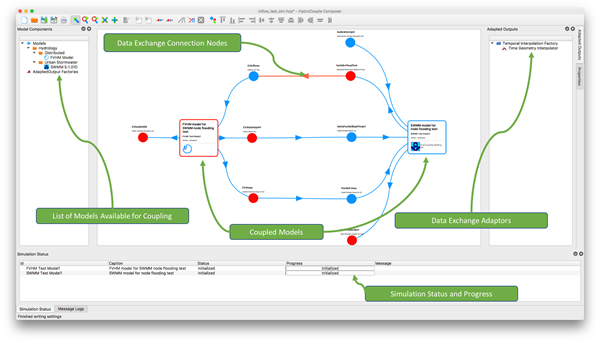
Figure 2: Software Framework Developed for Coupling Models
Caleb’s current work involves coupling together models that simulate the natural and built portions of urban water systems. By working with the City of Logan and using aquatic and climate data from iUTAH’s Gradients Along Mountain to Urban Transitions (GAMUT) network, he is able to examine present and future water capacity related to the cities’ stormwater system. An example output from his work shows the interactions between the canal system and the engineered stormwater infrastructure.
By demonstrating how this framework can be useful for bringing together models and data for different aspects of Utah’s water system, Caleb is creating software tools and guidance that can help other researchers evaluate not just water systems but other natural resource systems. In so doing, scientists will be able to avoid the pitfalls of studying parts of a problem independently, without considering the important ways that different resources affect each other and our future.
April 29, 2015
How Thirsty are the Trees we Plant in our own Front Yards?
Trees provide welcome shade and can reduce the need to water lawns in the hot Utah summer. But trees also need water themselves. Understanding how mature urban trees use water can help give municipal land and water managers a better idea of how to conserve water. Quantifying water use by the most common tree species may prove particularly valuable because forests do not naturally occur in Utah’s urban areas. Planted trees within the city are maintained by irrigation, requiring large amounts of water. iUTAH researcher Dr. Richard Gill and his graduate student, Michael Bunnell, are studying urban tree sites in the Heber Valley of Wasatch County, Utah. This valley is a rapidly developing landscape where populations are projected to grow 90% by 2030. With this urban expansion and human population growth, more trees are expected to be planted within the region, placing a greater demand on the valley’s water resources.
Bunnell’s initial findings show a trend in planting deciduous tree species such as maple in new developments within this region. These species inherently use more water than conifer species such as blue spruce. Looking at particular tree species, Bunnell’s initial findings suggest that the biggest determinant of water use for a single tree is the anatomy of the sapwood tissue. For example, some trees conduct water through all living tissue, while in others, water movement is constrained to the current year’s growth only.
In a region where water resources are limited, it is important to understand the influence of planted forests on water use. To achieve this goal Gill and his students are collecting sap-flux measurements to quantify daily and seasonal patterns of transpiration in dominant landscape trees occurring within suburban reaches of the Heber Valley. Ultimately, this research will assist urban land managers in better identifying water-efficient tree species and aid in making decisions about planting densities.

Fig 1: Sap flux sensors installed in an American sweetgum.
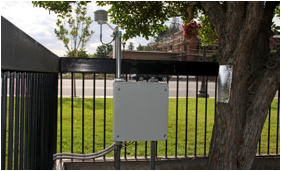
Fig 2. Enclosure for instrumentation collecting climactic data.
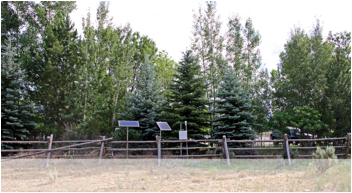
Fig 3. Sample of a field site location.

Micheal Bunnell
March 30, 2015
How Can City Planners Contribute to Urban Water Conservation?
Urban populations across the U.S. are growing, and planning for urban water supplies is critical to ensure that this most critical of resources is available to support future populations. While urbanization poses a multitude of challenges for providing and sustaining water resources, there are opportunities that exist in cities as well. Cities provide education and income, foster creativity and innovation, and will be the future of most of humanity. Research Assistant Philip Stoker and his PhD adviser Dr. Sarah Hinners are asking how city planners can contribute to urban water conservation efforts.
Stoker has interviewed over a dozen water managers and city planners across four western states to answer this question. The interviews revealed insights into current conservation efforts, barriers to water conservation, and the role of the city planner. The most important thing planners can do is to work water resources into their planning processes, and to consider water resources in each decision. This may involve including an individual from a water management agency on a land use planning organization’s staff. If not directly staffing a water supply planner, they should regularly involve their local water managers and incorporate these managers into planning processes and decisions. Some planners may consider water as “not in my jurisdiction,” and water may not even be on some planners’ radar. The goal is to break down these planning silos and recognize water resources in land use planning processes and decisions.
The goal of Stoker’s research is to highlight good examples and practices so that water conservation efforts across the U.S. can achieve the results they seek. He said he appreciates the contributions of the individuals who shared their expertise in water management and planning, and is preparing a summary report to be shared with the iUTAH team.
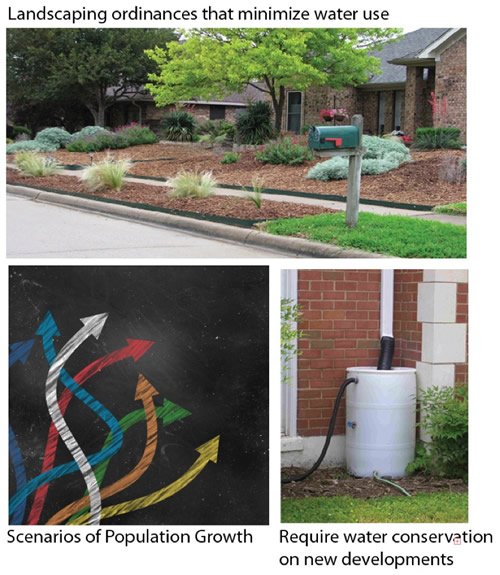
March 18, 2015
T.W. Daniel Experimental Forest in the News
KSL-TV, Deseret News and the Standard Examiner recently featured iUTAH researcher Scott Jones and his work in the Logan River watershed. The stories described how data gathered at iUTAH's GAMUT climate station on the T.W. Daniel Experimental Forest can help water managers understand the drought implications of Utah's warm winter. Watch the KSL News report and read the Deseret News and Standard Examiner articles.
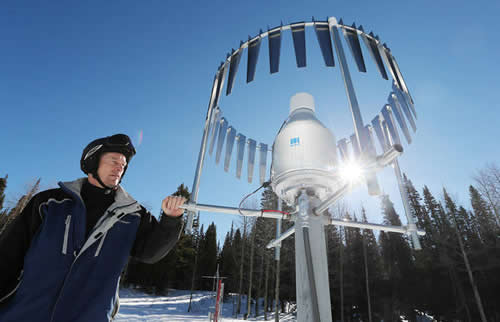
March 17, 2015
iUTAH Conceptual Framework Paper Published
iUTAH researchers have just published a paper entitled iSAW: Integrating Structure, Actors, and Water to Study Socio-Hydro-Ecological Systems. iSAW is an integrated framework for human-water system sustainability, using system components that include structure, actors, and water. This framework can be applied to multiple natural resource issues. Authors of the paper are Rebecca L. Hale, Andrea Armstrong, Michelle A. Baker, Sean Bedingfield, David Betts, Caleb Buahin, Martin Buchert, Todd Crowl, R. Ryan Dupont, James R. Ehleringer, Joanna Endter-Wada, Courtney Flint, Jacqualine Grant, Sarah Hinners, Jeffery S. Horsburgh, Douglas Jackson-Smith, Amber S. Jones, Carlos Licon, Sarah E. Null, Augustina Odame, Diane E. Pataki, David Rosenberg, Madlyn Runburg, Philip Stoker, and Courtenay Strong.
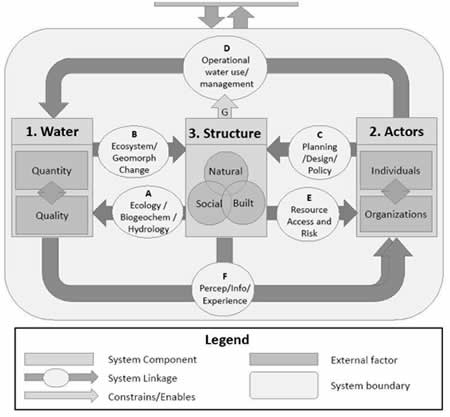
February 1, 2015
Where is the Nitrogen in Utah's Streams Coming From?
Air pollution that is in rain, snow, and dry particles can affect the biology and quality of stream ecosystems. iUTAH Postdoctoral researcher, Dr. Steven Hall’s work confirms that both urban and mountain snow in Northern Utah contains the same components that are in PM2.5, the fine particulate matter that is of the greatest health concern about air pollution. This demonstrates that local air pollution has a widespread environmental impact. Despite differences in air pollution in the Salt Lake, Cache, and Heber valleys, similar amounts of nitrogen were deposited in those areas during the winter of 2013-14.
Dr. Hall has found there is ample nitrogen in Utah’s urban streams, but air pollution isn’t the main culprit. Hall’s data shows that only a small amount of the nitrogen in precipitation actually ends up in streams. Most of the nitrogen is taken up or removed by plants and microorganisms. Rather, other urban sources appear to be the dominant contributors of nitrogen in streams. In Salt Lake City's Red Butte Creek, stream nitrogen peaked following inputs of urban groundwater. Measurements of nitrogen isotopes in streamside plants showed differences in nitrogen composition between plants in the mountains and those in urban areas. This suggests a shift in nitrogen sources and cycling as streams enter urban areas. The amount of nitrogen being measured is not directly hazardous, but can contribute to numerous changes in our aquatic ecosystems. These include shifts in biological communities (the identity and abundance of species) and the increased growth of algae.
What does this mean for those living in these urban areas? To decrease the nitrogen in our streams, use less fertilizer on your lawn or convert your yard to drought-tolerant vegetation. In many cases fertilizer is over-applied, and frequent applications are unnecessary given high background nitrogen inputs from atmospheric deposition, especially if clippings are retained on the lawn.
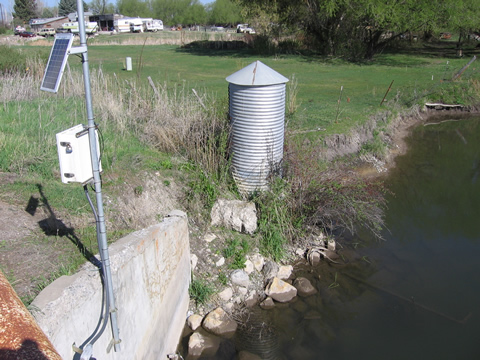
SITE3-GAMUT site at Mendon Road, Mendon UT
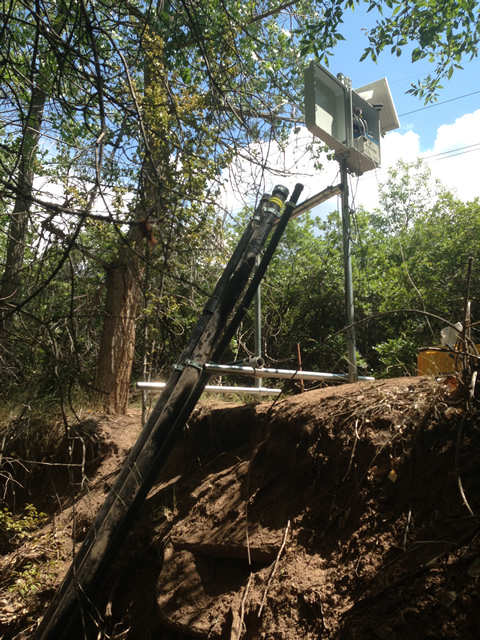
SITE5-GAMUT site at Foothill Drive, Salt Lake City UT


